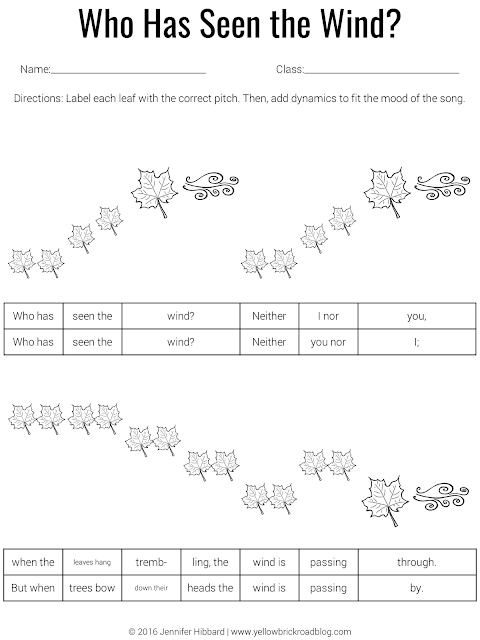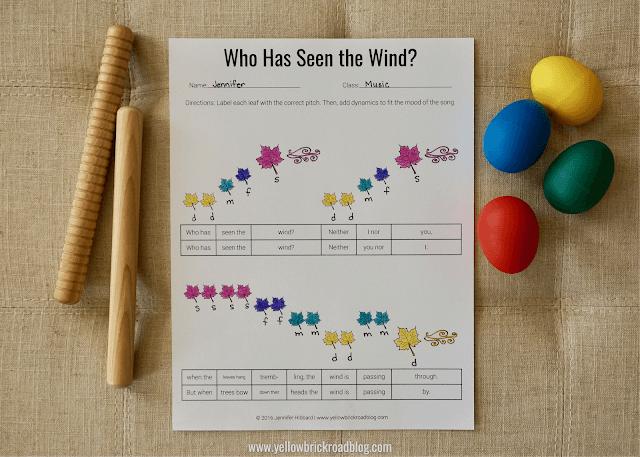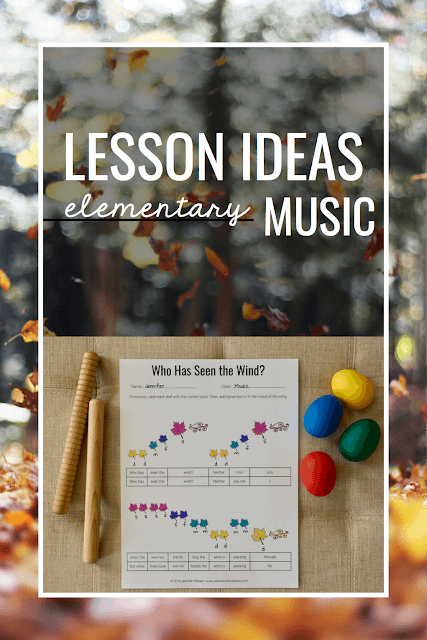I’m back this week with a brand new video and freebie. Thankfully, my ear troubles have ceased for now (no more deranged robot echoing in my ears). So, I’m back to making videos and recording audio again, and I couldn’t be happier!
While looking through song materials last week, I was reminded of a blog post I did last year using the song Who Has Seen the Wind? I wrote about how the song is great for teaching rhythms (such as half note) and also lends itself to teaching dynamics due to the subject matter. You can read the full post of ideas for teaching those concepts HERE.
However, today I wanted to recycle the song for a different purpose, to teach melody in a minor key. No one can deny the haunting melody of this song, so it’s perfect for conveying a minor key. The words are a bit haunting as well, which adds to the mood of the piece.
LYRICS
Jumpstart a discussion on the mood of the piece by asking students to analyze the lyrics. Ask questions such as, “What words are the most important?” “Is there anything mysterious about the words?” “Does the idea of trees bowing down their heads make you feel happy or sad?” “Why?” “Why do you think the author used the word trembling in this song?”
LISTENING
Next, play a few improvised melodies on the piano, alternating between major and minor melodies. Think: major, fast marches versus minor, begrudgingly slow ballads. Each time you play a melody, ask students if they think the sound fits with the lyrics they analyzed. Make it a little bit fun and mysterious and tell them that you’ll slip in the real melody of the song to see if they can guess which one it is.
Once you’ve finished the listening exercise, you can play the video below.
ACTIVITY
I wanted to create a worksheet that could be used in multiple ways along with my lesson ideas, and I think I accomplished my goal! Click one of the images below to download the worksheet.
The directions of the worksheet are editable, so you can add in your own text. Here are a few suggestions that you could try:
- Label each leaf with the correct pitch.
- Add dynamics to fit the mood of the piece.
- Label each leaf with the correct pitch. Then, color in the leaves so that they correspond with the colors of pitched percussion tubes or bells.
- Create and write a rhythmic ostinato below the lyrics. Then, use body percussion to perform the ostinato as you sing the song.
- Imagine a picture in your mind as you listen to the song. Consider how the mood of the song affects what you see. Then, use the back of this paper to draw what you imagined.
- Change the words of the song to create a new piece that fits with the upcoming winter season.
My favorite option is playing the melody with Boomwhackers or some other color-coded instrument. I think it’s just challenging, yet simple enough to leave students feeling good about themselves without taking weeks to learn. I went ahead and filled out the worksheet to give you an example of what it might look like if you were to use it for playing instruments:




4 Responses
Oh, I'm so glad you brought back this song- I had forgotten about the awesome dynamics lesson that you had to go with it and now adding the study of minor tonality is perfect! I recently got some fun autumn leaves at the Dollar Tree, which would be perfect to use with this song to show melodic contour or just as a movement activity to go with the song…. Thanks again for sharing! So glad to hear your ears are doing better!
I saw the leaves that you got. I ALMOST went out and got the same ones for this lesson, but then decided to make the worksheet instead. Yes, I'm thrilled that my ears are better. I see the ENT in a week, so I'm hoping to find out more then on how to prevent it from ever happening again 🙂
I've always taught this with low la minor – la la do re mi … Your solfege says ddmfs … curious if you teach with fixed do with the mi-me for minor?
I love the extra verse! I've never heard it! Thank you!
Great question! I'm using moveable do, but in the do-based minor system, instead of la-based 🙂